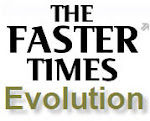 Onsite assessment, analysis and classification of natural areas and natural communities is the job of the community ecologist while infield. Depending on specialty and employer, the variables measured by these scientists could range from the organic content of soils, to tree canopy invertebrate biodiversity, or anything in between; it’s a physical job and deals with evaluation of natural systems, organic and inorganic, as they exist and function contemporaneously - or at least that’s the traditional role of these scientists. Currently things may be changing; no longer are community ecologists limited to the quantitative and qualitative assessment of systems as they exist at hand, now, thanks to advances in our understanding of genomics and phylogeny, evolution is entering into the equations of ecology.
Onsite assessment, analysis and classification of natural areas and natural communities is the job of the community ecologist while infield. Depending on specialty and employer, the variables measured by these scientists could range from the organic content of soils, to tree canopy invertebrate biodiversity, or anything in between; it’s a physical job and deals with evaluation of natural systems, organic and inorganic, as they exist and function contemporaneously - or at least that’s the traditional role of these scientists. Currently things may be changing; no longer are community ecologists limited to the quantitative and qualitative assessment of systems as they exist at hand, now, thanks to advances in our understanding of genomics and phylogeny, evolution is entering into the equations of ecology.Charles Darwin recognized that phenotypic and ecological similarity existed between species with shared ancestry. This relationship between environmental fit and evolutionary history created a paradox in his mind; if ecologically and genealogically similar, shouldn’t species exhibit the same resource needs and be found coexisting in habitats where those resources are present? But at the same time, shouldn’t direct competition for those resources of mutual necessity push the organisms in different directions and towards acquisition of divergent characteristics?
Does the phylogenic history of a species factor into a currently evaluated ecological system, or are hydrology, soil chemistry, biodiversity, trophic interaction and anthropogenic effects the only variables of concern to the community ecologist?
This dilemma has been evident throughout the history of ecology. It has effectively resulted in a linear continuum of thought in which one side supports a model of ecological assembly that accounts for the interplay of species through evolutionary time; at the other side of the spectrum, ecological systems are viewed as a minute snapshot of the temporal range with organismal and physical components that are to be measured in situ, without a concern for past or future directionality. On the whole, this continuum is now showing bias towards the inclusion of evolution.
More and more ecologists are coming to place value on the interaction of species within the temporarily fluctuating biological and physical environments in which they are submersed. Through complex nutrient cycling and resource accusation processes organisms alter the physical world around them and in so doing interact with other organisms via competitive and mutualistic dynamics. These newly altered physical environments, freshly acquired mutualisms and recently incepted rivalries provide direct feedback to the original organism forcing additional change and adaptation – just as the ecological picture was becoming clear, it changes again.
Recognizing the links between biological organisms and the physical environment as they exist over deep time and with respect given to spatial biogeography, dispersion and phylogeny is essential to the future of the field. Further developing of methodologies and techniques that incorporate these highly complex dynamics into tools that can be utilized by in-field ecologists should be – will be – an important step in conserving the world’s biota well into the future, particularly on a planet with a rapidly expanding human population and a quickly changing climate.
Cavender-Bares, J., Kozak, K., Fine, P., & Kembel, S. (2009). The merging of community ecology and phylogenetic biology Ecology Letters DOI: 10.1111/j.1461-0248.2009.01314.x
Harmon, L., Matthews, B., Des Roches, S., Chase, J., Shurin, J., & Schluter, D. (2009). Evolutionary diversification in stickleback affects ecosystem functioning Nature, 458 (7242), 1167-1170 DOI: 10.1038/nature07974





























No comments:
Post a Comment